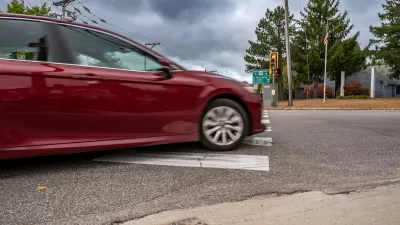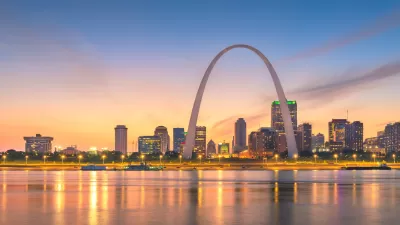Despite years of consistent decline, and a variety of efforts aimed at improving safety, traffic fatalities spiked by 23 percent last year in New York City. Matt Flegenheimer examines what may be causing the increase.
Findings included in last week's release of the twice-yearly Mayor's Management Report revealed figures that are sure to give pause to Mayor Bloomberg and his top transportation deputy, Janette Sadik-Khan. "Though overall crashes fell slightly for the second straight year, 176
cyclists or pedestrians were killed in crashes, up from 158 the previous
year. The other 115 deaths were motorists or their passengers, a sharp
rise from the 78 drivers and passengers killed the year before."
While Flegenheimer seems to suggest initially that the numbers indicate the failure of recent measures credited with improving safety, such as pedestrian plazas and bike lanes, he also notes that "preliminary
analysis suggested that the crashes were concentrated on highways, far
removed from many of the areas that have been the focus of the city's
initiatives."
"According to the Mayor's Management Report, speeding, driving while
intoxicated, and running red lights or stop signs accounted for a
combined 54 percent of motorist or passenger fatalities." DOT Commissioner Sadik-Khan also attributes partial blame to a rise in distracted driving and distracted walking.
"The traffic data appears more encouraging," notes Flegenheimer, "when set against figures from
past years, before the city experienced its recent sharp decline in
annual deaths. There were 243 traffic fatalities in the calendar year
2011, about a 38 percent reduction from 2001."
FULL STORY: Traffic Deaths Rise in New York City

Alabama: Trump Terminates Settlements for Black Communities Harmed By Raw Sewage
Trump deemed the landmark civil rights agreement “illegal DEI and environmental justice policy.”

Study: Maui’s Plan to Convert Vacation Rentals to Long-Term Housing Could Cause Nearly $1 Billion Economic Loss
The plan would reduce visitor accommodation by 25% resulting in 1,900 jobs lost.

Planetizen Federal Action Tracker
A weekly monitor of how Trump’s orders and actions are impacting planners and planning in America.

Waymo Gets Permission to Map SF’s Market Street
If allowed to operate on the traffic-restricted street, Waymo’s autonomous taxis would have a leg up over ride-hailing competitors — and counter the city’s efforts to grow bike and pedestrian on the thoroughfare.

Parklet Symposium Highlights the Success of Shared Spaces
Parklets got a boost during the Covid-19 pandemic, when the concept was translated to outdoor dining programs that offered restaurants a lifeline during the shutdown.

Federal Homelessness Agency Places Entire Staff on Leave
The U.S. Interagency Council on Homelessness is the only federal agency dedicated to preventing and ending homelessness.
Urban Design for Planners 1: Software Tools
This six-course series explores essential urban design concepts using open source software and equips planners with the tools they need to participate fully in the urban design process.
Planning for Universal Design
Learn the tools for implementing Universal Design in planning regulations.
Caltrans
Smith Gee Studio
Institute for Housing and Urban Development Studies (IHS)
City of Grandview
Harvard GSD Executive Education
Toledo-Lucas County Plan Commissions
Salt Lake City
NYU Wagner Graduate School of Public Service





























